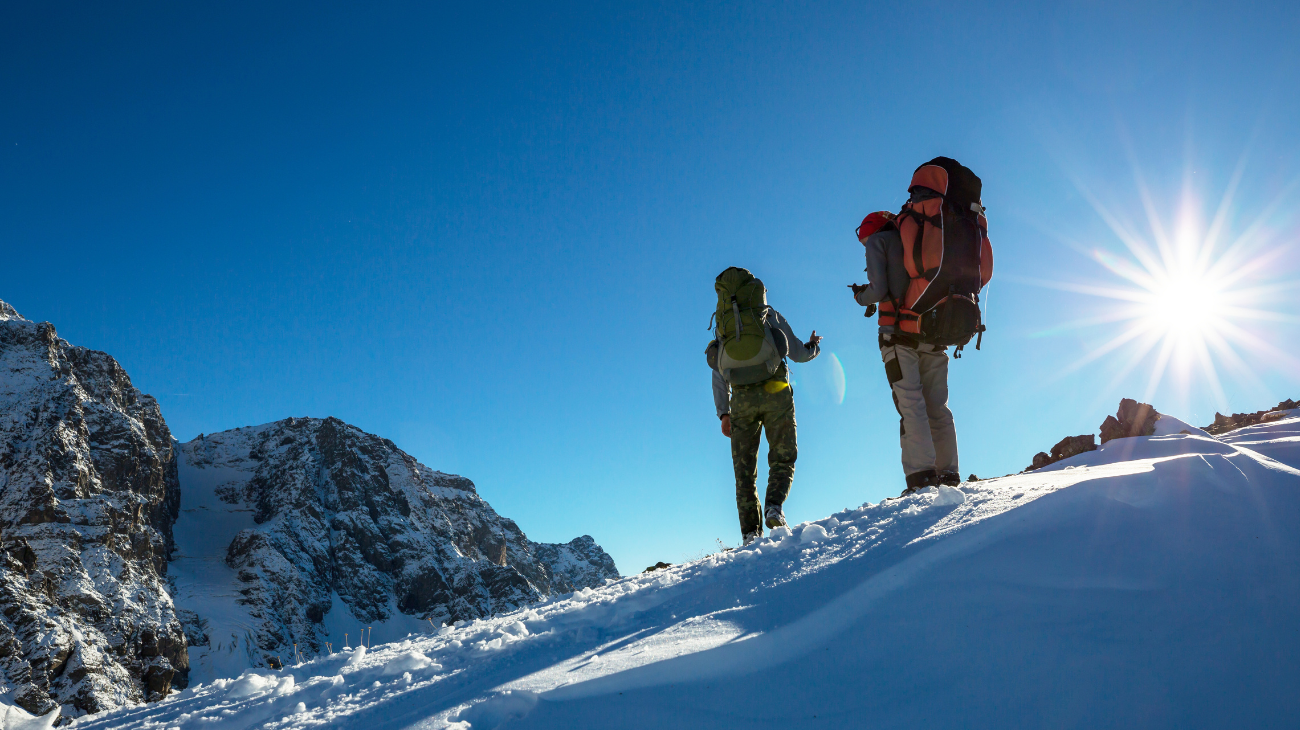Winter tourism, with its focus on snow sports and outdoor activities, is a key component of the economy of many mountain regions. However, the impact of climate change and the growing awareness of the need for sustainable practices are changing the face of this industry.
- Mountain tourism and climate change
- Environmental impacts of artificial snow
- The adaptation of mountain tourism as a sustainable practice
Mountain tourism and climate change
Ski lifts have long been a mainstay of winter mountain tourism. L’Europe is currently the largest global winter sports tourism market, with around 60 per cent of the world‘s skiers skiing on the slopes of our continent.
However, their existence is threatened by global warming!
To the concern of biathlon, skiing, snowboarding or carving fans, a study published in the journal Nature Climate Change revealed that if global temperatures continue to rise, we could soon be living in a ‘post-skiing’ world.
More than half of Europe’s ski resorts will experience a severe lack of snow if temperatures rise by 2°C compared to pre-industrial levels; a 4°C temperature increase, on the other hand, would lead to a lack of snow in 98% of ski resorts.
In Italy, winter tourism is an important sector of the economy. However, even in these places climate change has led to milder winters and a decrease in snowfall, making it increasingly difficult to maintain skiable slopes throughout the season.
Despite these challenges, the sector in Italy has shown signs of resilience.
For example, in 2023, 12 million Italians spent a holiday in the snow between January and March, generating an economic spin-off of 9.6 billion euro. The most popular regions were Valle d’Aosta and Trentino-Alto Adige, followed by Piedmont, Lombardy and Abruzzo.
Environmental impacts of artificial snow
The creation of artificial snow has become a common practice in ski resorts to compensate for the lack of natural snow. However, this practice has given rise to several controversies.
Large amounts of water and energy are required to produce this snow, which can have a significant impact on local resources. Furthermore, its molecular structure is different from that of natural snow, which may alter soil composition, vegetation and biodiversity in Alpine areas. Artificial snow production can also have a significant acoustic impact due to the operation of systems.
The energy consumption of this production depends on the altitude at which water is available. Laying pipes to pump water upstream requires major earthworks in the mountains and construction work, which, in the long term, damages the mountain ecosystem.
Let’s look at some alternatives to the ‘classic’ creation of artificial snow:
- The snowfarming which involves collecting large quantities of snow during the most favourable seasons and accumulating it in dedicated areas; this snow is then covered with sawdust insulation, followed by special tarpaulins to minimise the absorption of solar heat, pending re-use in the following season.
- Artificial clouds are the result of a technology developed by a group of Austrian researchers. This technology involves introducing water droplets into a balloon placed at a height of 3.5 metres, thus creating a kind of artificial cloud. The temperature of the air chamber causes the water droplets to solidify, forming crystals that grow and fall from the balloon like snow.
- ‘Green Snow’ is the invention of a start-up company from Trentino that has come up with a sustainable snow gun. This device uses renewable energy from the recovery of wood from local forests, operating at temperatures of up to 16 degrees Celsius and working exclusively with renewable sources.
The adaptation of mountain tourism as a sustainable practice
As suggested by the Guidelines for Adaptation of the Alpine Convention, to which Italy is a party, the reduction of local economic dependence on skiing should be aimed at.
Tourist resorts can offer a range of outdoor activities that are not dependent on snow, such as hiking, mountain biking, and other recreational activities.
The sector needs to be reconverted in order to expand the alternative offer, and this reconversion process may include the adoption of new technologies, the implementation of innovative marketing strategies and the expansion of cultural and recreational activity offers.
In conclusion, the adaptation of mountain tourism to the snow shortage requires a multidisciplinary approach including the diversification of the tourism offer, the reconversion of the sector and the implementation of climate change adaptation plans.
Thus, energy consumption can be reduced and more efficient water management practices can be implemented.
Play for the planet!
